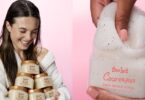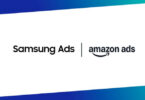By Robert Klara & Paul Hiebert
In 2015, CNN’s Gary Tuchman visited a Fort Worth woman named Elizabeth Sullivan, age 104, to uncover her secret to longevity. Sullivan was happy to tell him: three cans of Dr Pepper a day.
“Doctors told me that if I drink it, I will die—but they died first,” she said.
Sullivan’s health advice is open to question, but she was ahead of a trend. After decades of being a footnote in the soft drink category, Dr Pepper has become a headline.
The changing face of PepsiCo
One factor behind Dr Pepper’s rise has been Pepsi’s decline.
Indeed, while Dr Pepper’s market share of the carbonated soft drink category has increased 2.33 percentage points since 1998, Pepsi’s has decreased by more than double that amount—5.72 points.
Pepsi’s tone-deaf Kendall Jenner commercial from 2017 didn’t do the brand any favors, but its downward trajectory is more about a shift in strategy amid changes in consumer preferences than any particular marketing misstep.
The sugar-heavy soda business is shrinking. Between 1998 and 2023, the volume of carbonated soft drinks bought and sold in the U.S. declined 24%.
PepsiCo is aware of this and has been diversifying its portfolio of beverages to better position itself for the future. In 2020, for example, PepsiCo purchased Rockstar Energy beverages for $3.85 billion. It’s also put a significant amount of time and effort into promoting Gatorade.
In a statement to ADWEEK, Greg Lyons, chief marketing officer of PepsiCo’s North American beverage segment, noted that he and his team are constantly monitoring shoppers’ attitudes and behaviors for growth opportunities.
“We’re continuing to prioritize the business to meet the growing consumer demand for healthier, functional, sugar-free options,” said Lyons. “We remain focused on Pepsi and Pepsi Zero Sugar in the U.S. and internationally, putting Zero Sugar at the center of the portfolio transformation, which in turn lifts our trademark.”
Although the Dr Pepper brand has surpassed conventional Pepsi, the overall family of Pepsi beverages—from Diet Pepsi to Pepsi Wild Cherry to Pepsi Zero Sugar—still controls more of the total beverage industry by volume (4.6%) than Dr Pepper and its many variations (3.8%), per Beverage Digest. With a 3.4% market share, PepsiCo’s Gatorade line trails Dr Pepper.
One soda’s loss is another’s gain
As PepsiCo adjusts its priorities, its namesake brand has taken a couple steps backward—at least when it comes to marketing.
In 2022, for example, Pepsi ended its decade-long sponsorship of the Super Bowl Halftime Show.
During the first four months of 2024, PepsiCo dedicated an estimated $23 million to advertising Pepsi, according to ad intelligence platform MediaRadar. That’s a 46% decline compared to the same time in 2023, when the company spent $43 million. Dr Pepper’s ad dollars, meanwhile, remained relatively flat between the two periods, decreasing from $34 million to $32 million, around 5%.
Experts stated that when comparing Pepsi to Dr Pepper, it’s important to remember PepsiCo (market cap: $224 billion) is significantly larger than Dr Pepper’s parent company, Keurig Dr Pepper (market cap: $43 billion). This gives PepsiCo, which also oversees a major snacks business featuring Cheetos, Doritos and Tostitos, the capacity to experiment and move resources around as needed. Keurig Dr Pepper, which owns A&W, Snapple and Canada Dry, among other beverages, doesn’t have as much flexibility.
As Brett Cooper, an analyst at New York-based research firm Consumer Edge, put it: “Dr Pepper is a more important brand for Keurig Dr Pepper than Pepsi is for PepsiCo.”
Pepper’s power of weirdness
Search for TikTok videos tagged with #drpepper and you’ll see few faces that look older than 30.
Last December, an 11-second TikTok video showed a toddler sobbing in full meltdown: “I want Dr Pepper!” The video was good for 2.4 million views, underscoring how younger consumers constitute a good portion of Dr Pepper’s fan base. It’s another driving force that explains how Dr Pepper has dethroned Pepsi.
“I think a lot of [Dr Pepper’s resurgence] is being driven by Gen Z—the TikTok nation, if you will,” said Widener University professor Ross Steinman, who teaches the psychology behind consumers’ relationship with brands.
Dr Pepper’s popularity among young consumers even supersedes the top soft drink, Coca-Cola. A 2024 report from consumer analytics firm Civic Science found that “Dr Pepper has a larger Gen Z and millennial customer base compared to Coke, which could account for the soft drink’s growing popularity.”
At the very least, younger consumers have been willing to give the stuff a try. In the past few years, around a quarter of U.S. consumers age 18-34 have said they’d consider buying Dr Pepper when next shopping for a beverage, according to data intelligence firm YouGov. This places the brand well above the category average, which in 2023 was 13%.
So, OK, younger drinkers have developed a fancy for Dr Pepper—but why?
Jack Mackinnon, senior director of cultural insights for the Collage Group, refers to Dr Pepper as “the mainstream, weird soda”—the eccentric alternative to the long-standing binary of Coke vs. Pepsi. And perceptions of uniqueness, he said, are part of its draw for younger drinkers, especially Gen Z.
“Their primary group trait [is what] we call collective individuality—the reversal of previous generations’ [desire to] fit in,” he said.
It’s the flavor, stupid
Dr Pepper’s unusual taste profile is another likely factor in its recent ascendancy. Back in 1963, a federal court ruled that Dr Pepper was a “pepper soda” and not a cola, simply because kola nuts were not on the ingredient list. As the story goes, Dr Pepper’s unusual taste was the result of Charles Alderton trying to capture his apothecary’s spicy smell in the form of a beverage.
According to a spokesperson for Keurig Dr Pepper, the drink’s distinctive flavor—which is actually the fusion of 23 flavors—remains a key advantage in a competitive segment.
“Despite being the oldest major soft drink in the U.S., Dr Pepper has continued to have undeniable momentum in the marketplace,” the spokesperson said. The drink’s capacity for winning new fans “has been enabled by its ability to provide a one-of-a-kind treat for consumers, supported by its original 23-flavor recipe that has defined its unique taste.”
Of course, Dr Pepper’s bite is not for everyone, but Tim Calkins, a marketing professor at Northwestern University’s Kellogg School of Management, believes that’s the point.
“One of the best things that Dr Pepper has going for it is that it is a polarizing brand,” he said. “Some people really like it, and some people don’t. But that makes it very intriguing for people.”
Adding to the intrigue is a raft of new flavors that Keurig Dr Pepper has rolled out to complement the original formula. Last year saw the debut of Strawberries & Cream and, in 2024, Creamy Coconut. Ken Sadowsky, senior food and beverage advisor for food and beverage investment firm Verlinvest, observed that “Dr Pepper’s line extensions may be resonating with consumers of all ages better than Mango Pepsi.”
Even without the new varieties, Dr Pepper’s piquant flavor is increasingly in step with food trends, according to Charles Lindsey, who teaches marketing at the University at Buffalo School of Management.
“Americans have developed a preference for spicier foods,” he said. “That plays well into the flavor profile that Dr Pepper offers.”
So well, in fact, that even Coke seems to have noticed. In February, the brand released its own piquant flavor: Coca-Cola Spiced.
Of course, none of these attributes was necessary to keep centenarian Elizabeth Sullivan from cracking open three cans a day. For the record, she made it all the way to age 106—surely, she’d have said, because of Dr Pepper.










